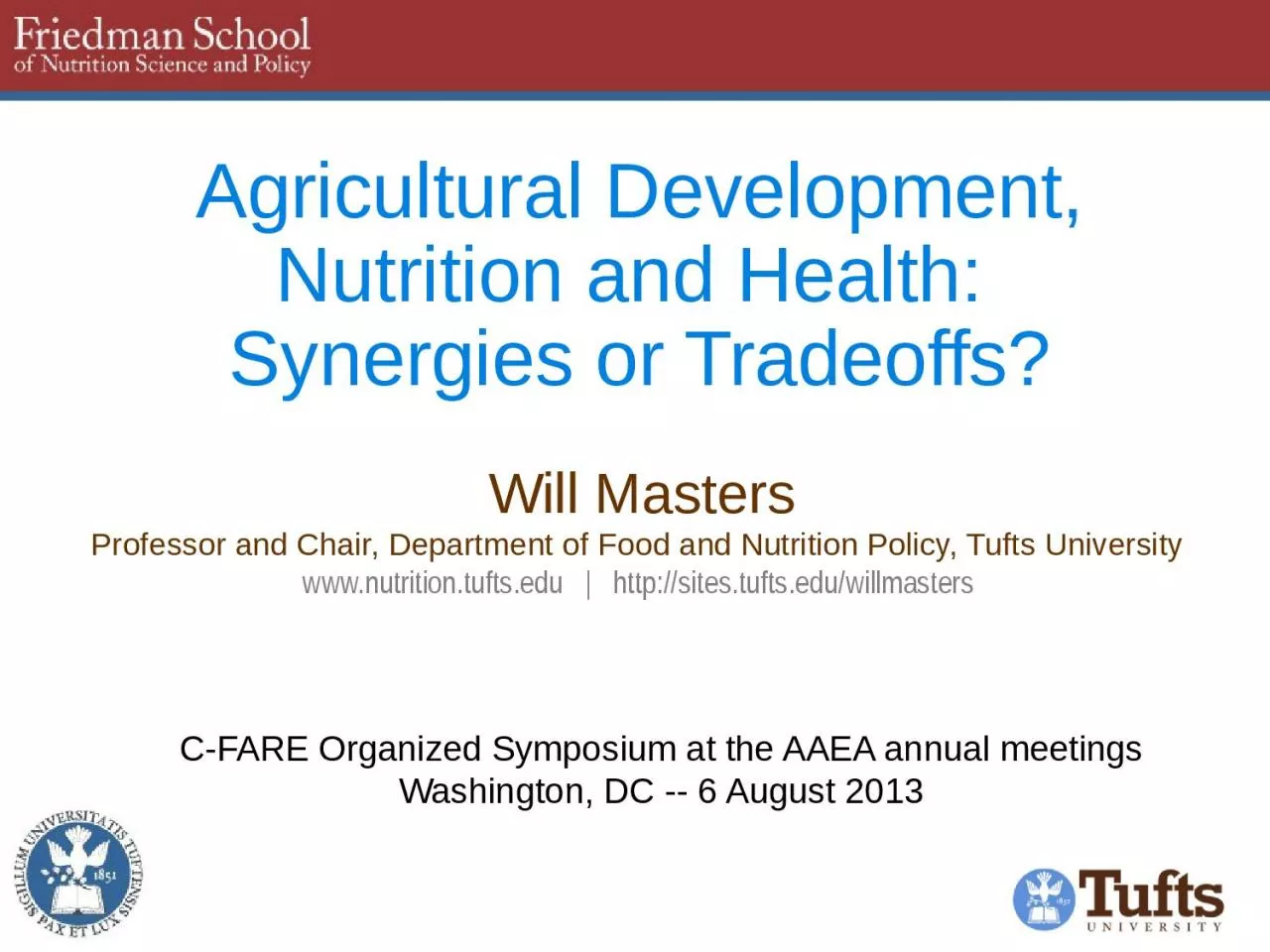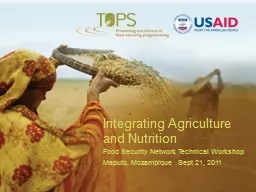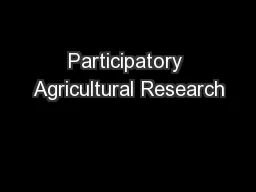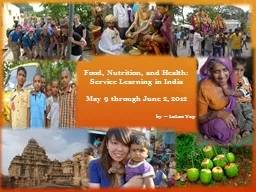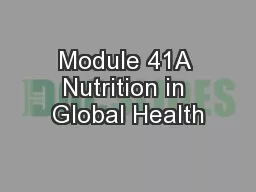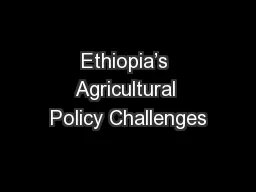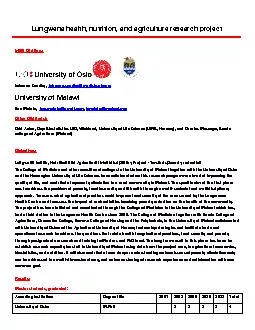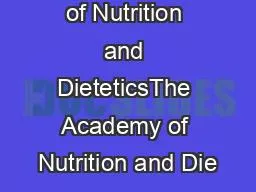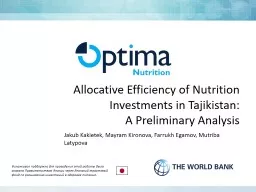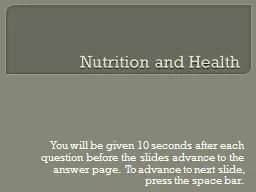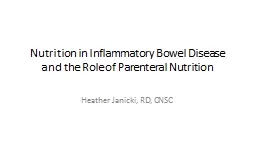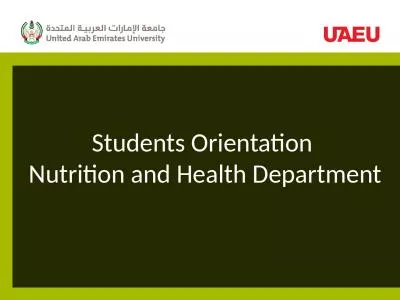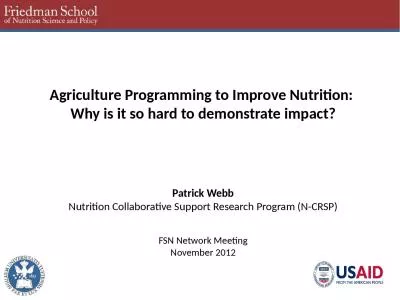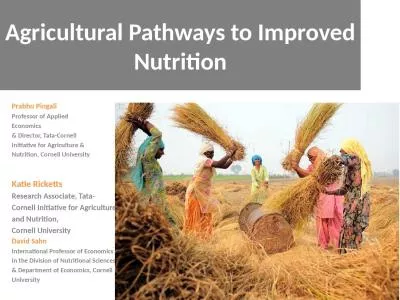PPT-Agricultural Development, Nutrition and Health:
Author : anderson | Published Date : 2024-03-15
Synergies or Tradeoffs CFARE Organized Symposium at the AAEA annual meetings Washington DC 6 August 2013 Will Masters Professor and Chair Department of Food
Presentation Embed Code
Download Presentation
Download Presentation The PPT/PDF document "Agricultural Development, Nutrition and ..." is the property of its rightful owner. Permission is granted to download and print the materials on this website for personal, non-commercial use only, and to display it on your personal computer provided you do not modify the materials and that you retain all copyright notices contained in the materials. By downloading content from our website, you accept the terms of this agreement.
Agricultural Development, Nutrition and Health:: Transcript
Download Rules Of Document
"Agricultural Development, Nutrition and Health:"The content belongs to its owner. You may download and print it for personal use, without modification, and keep all copyright notices. By downloading, you agree to these terms.
Related Documents

